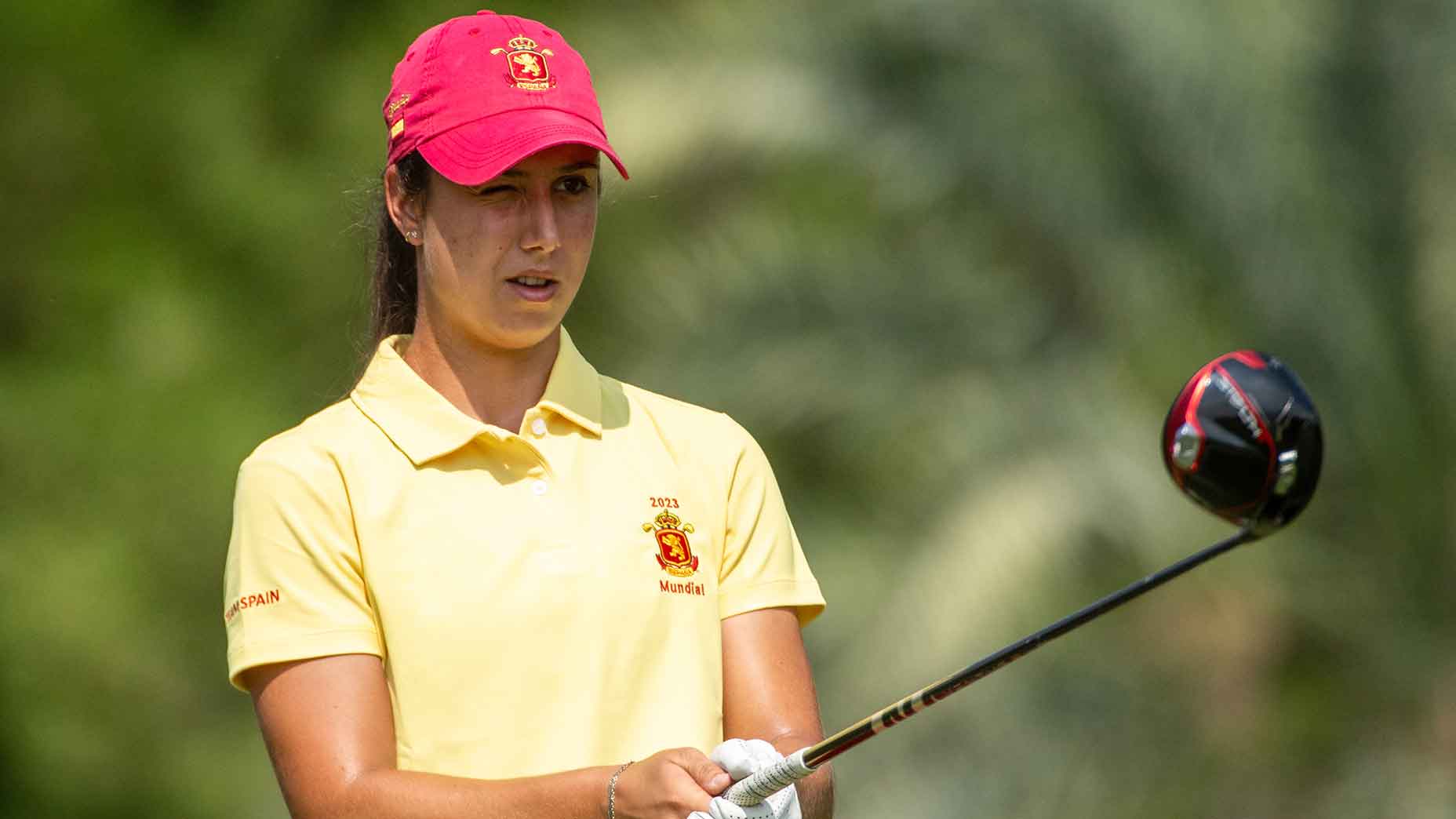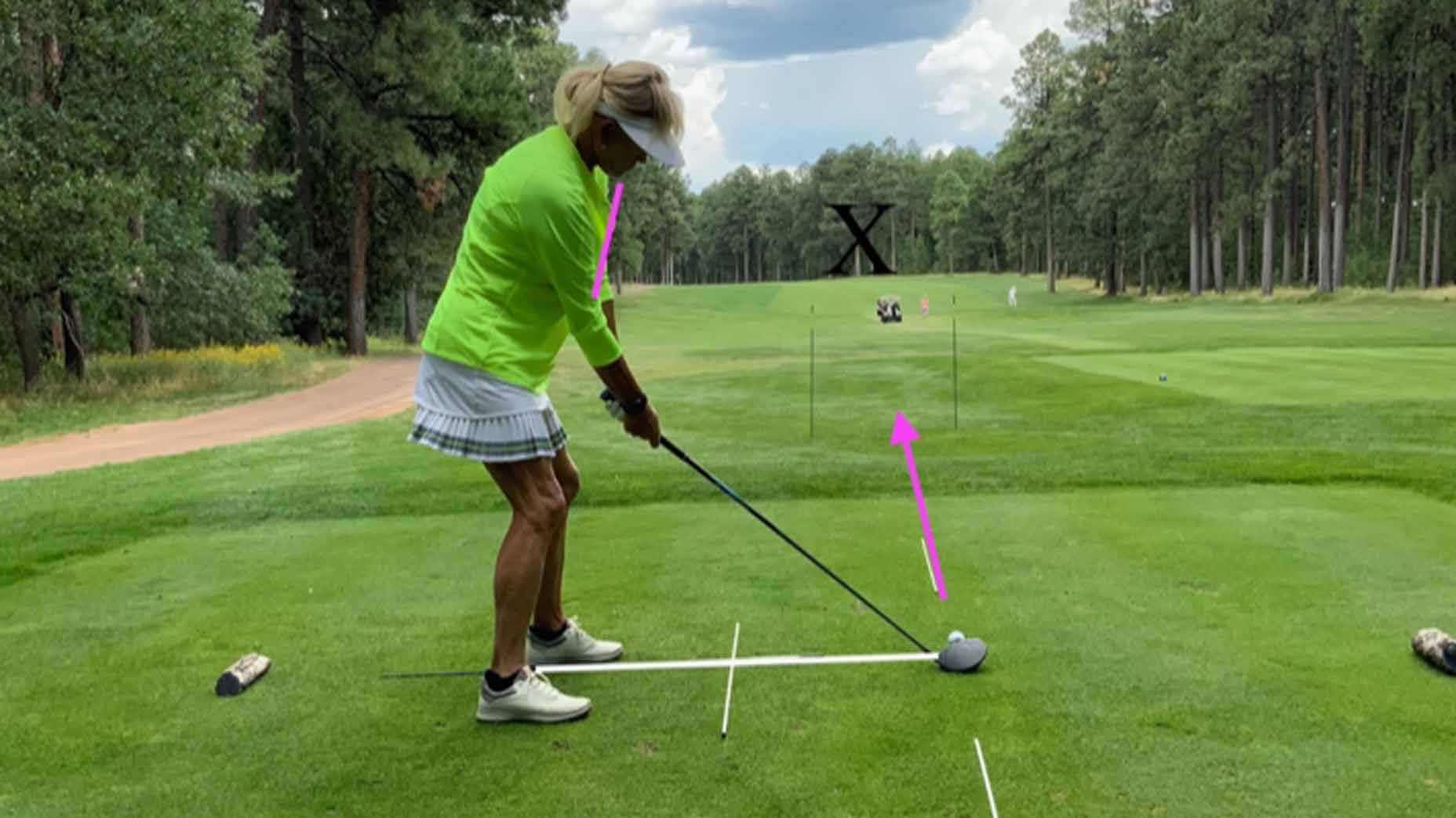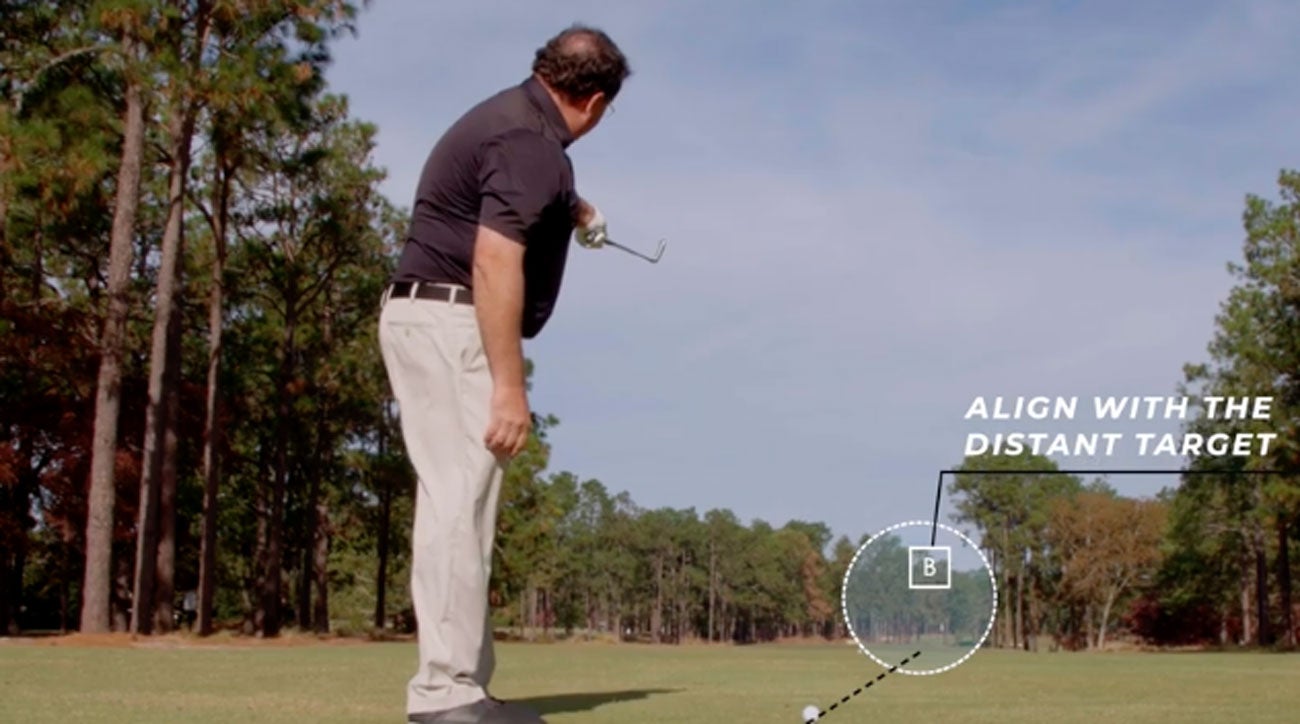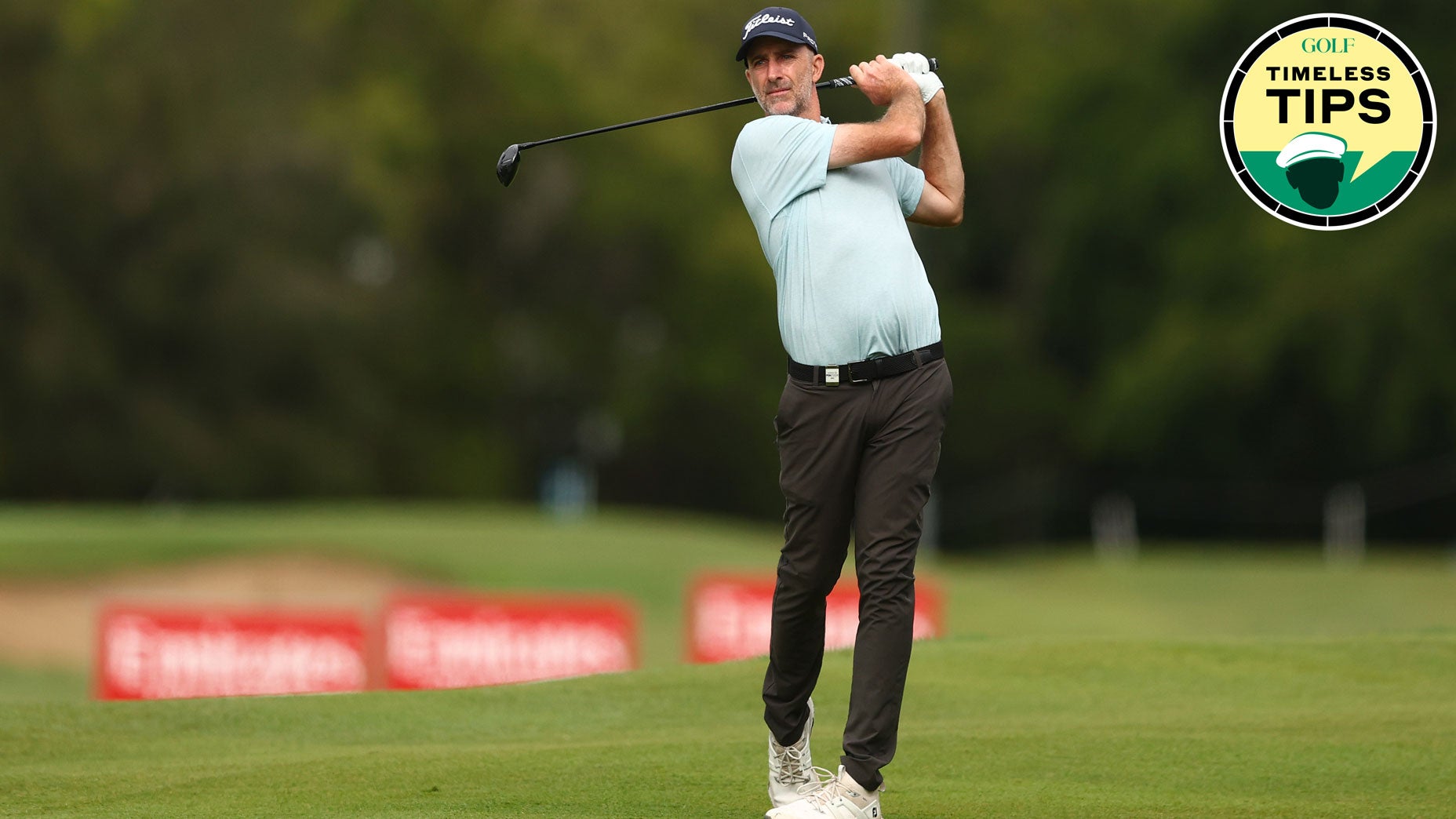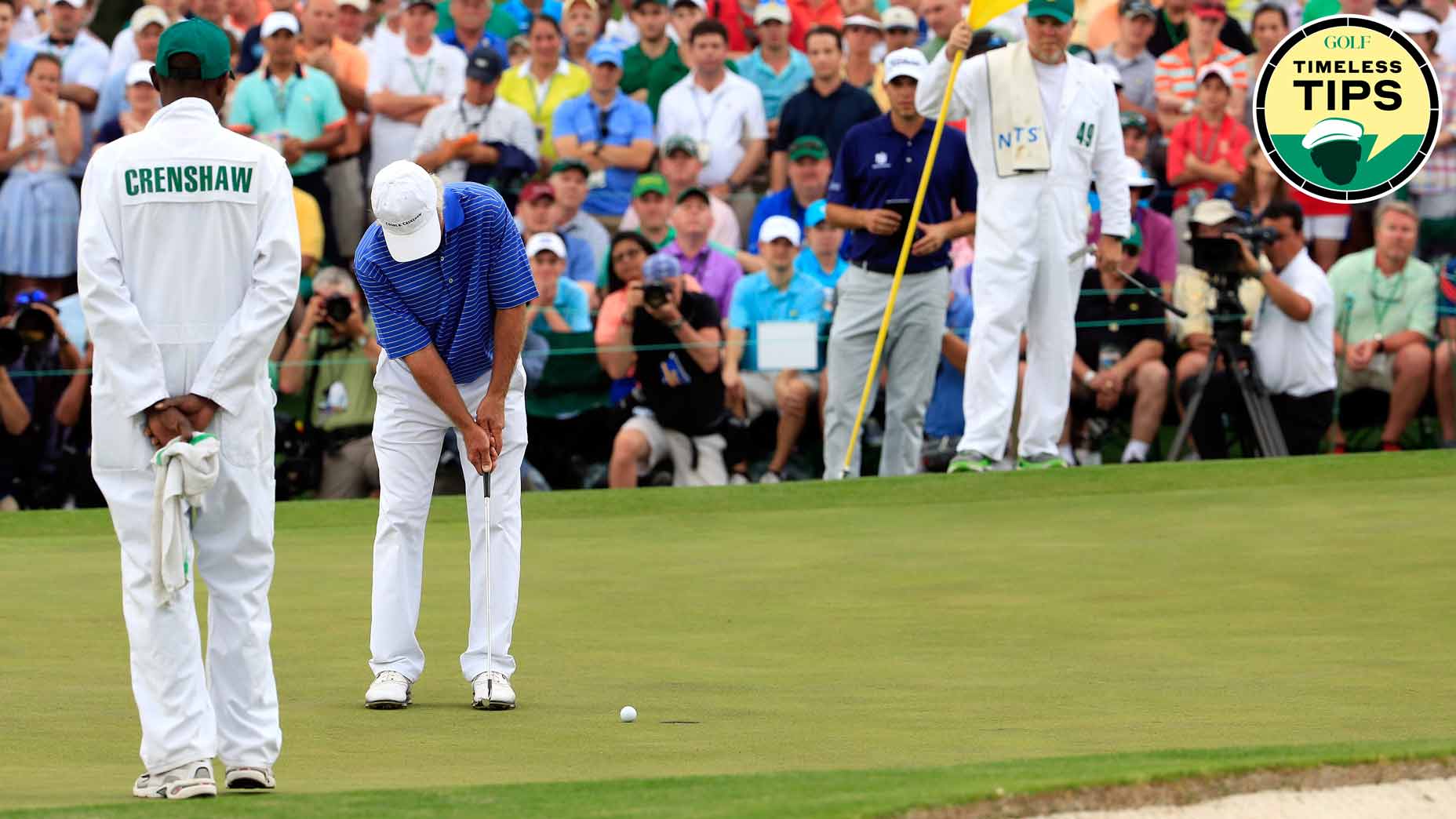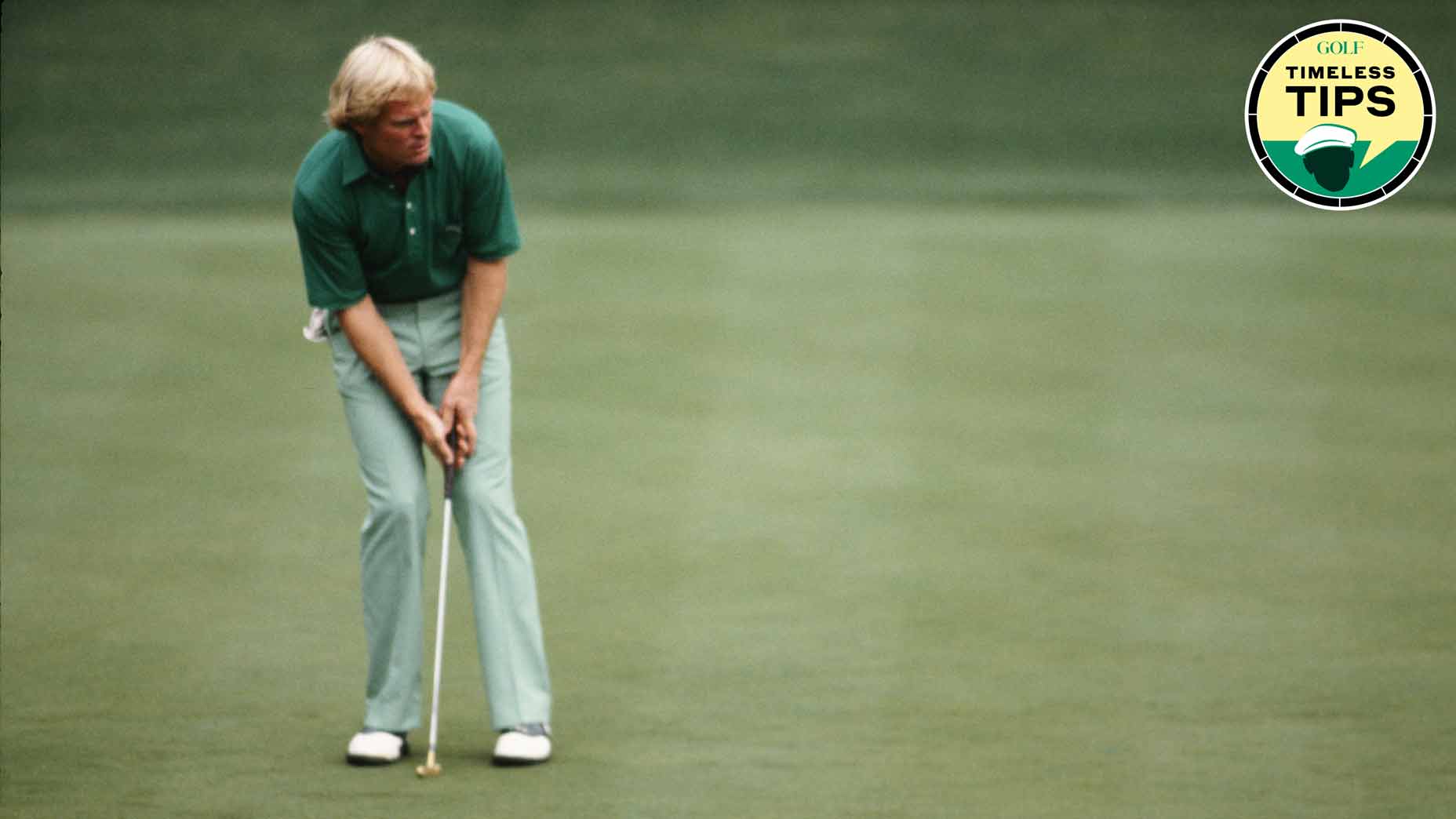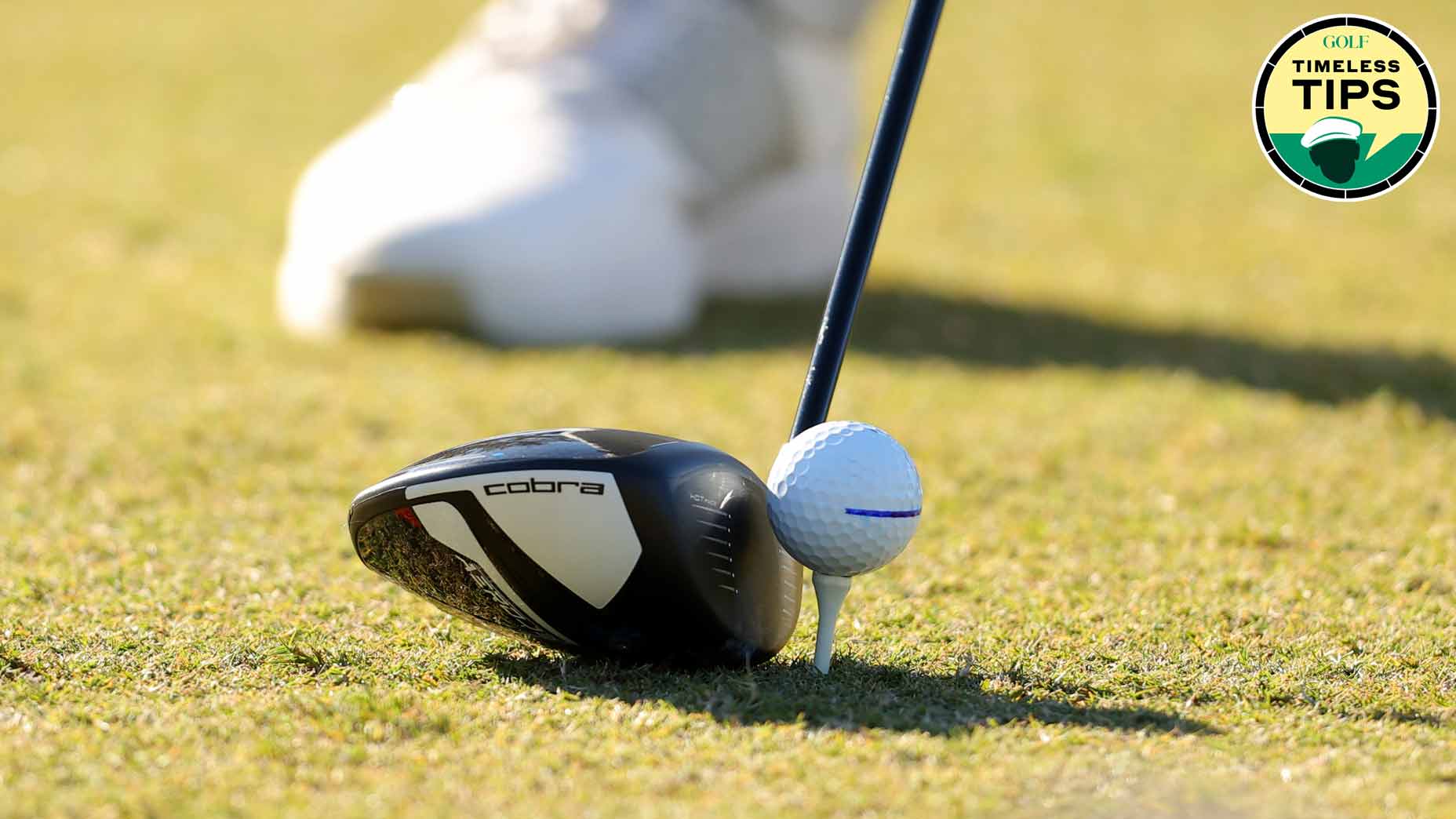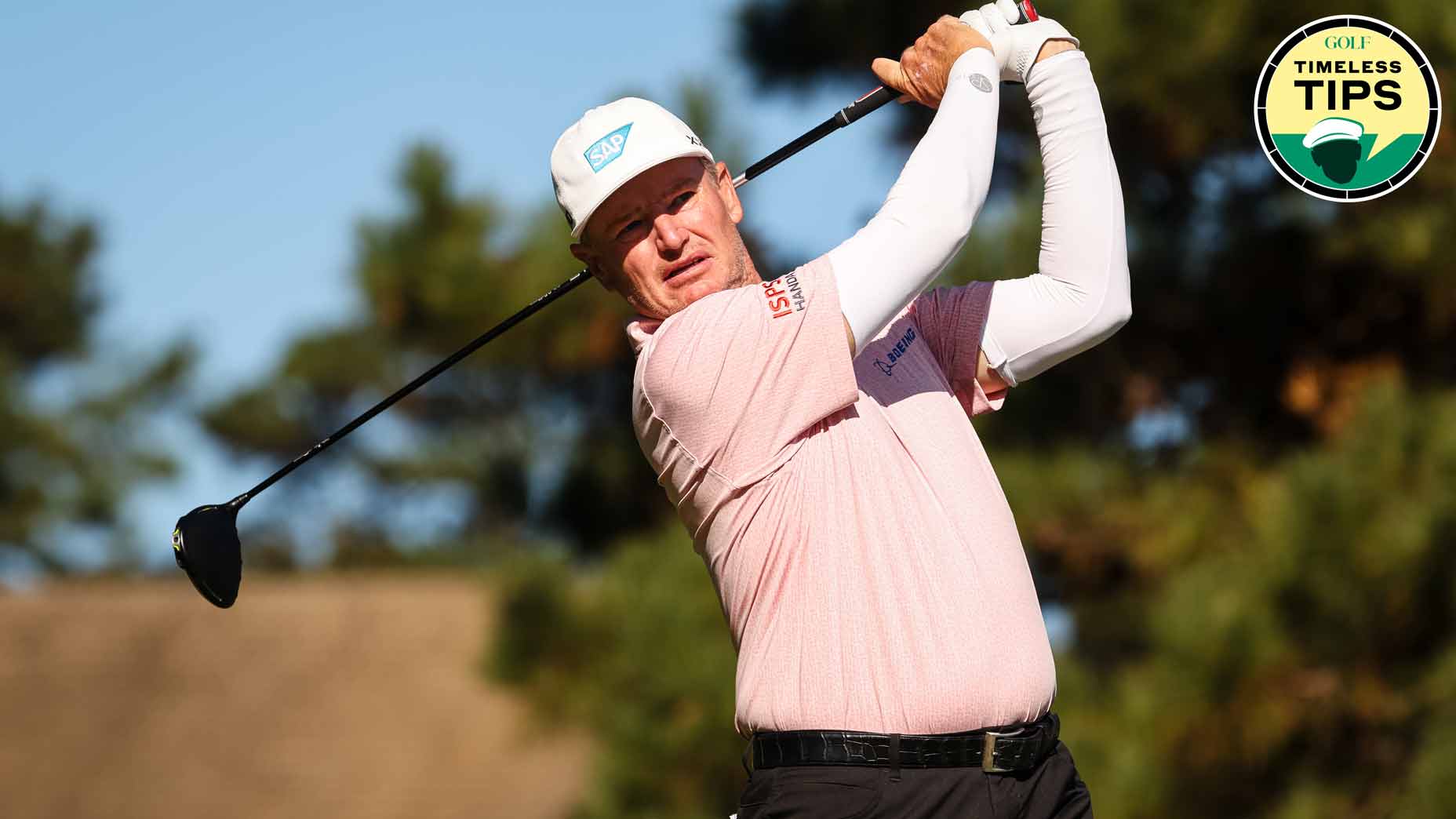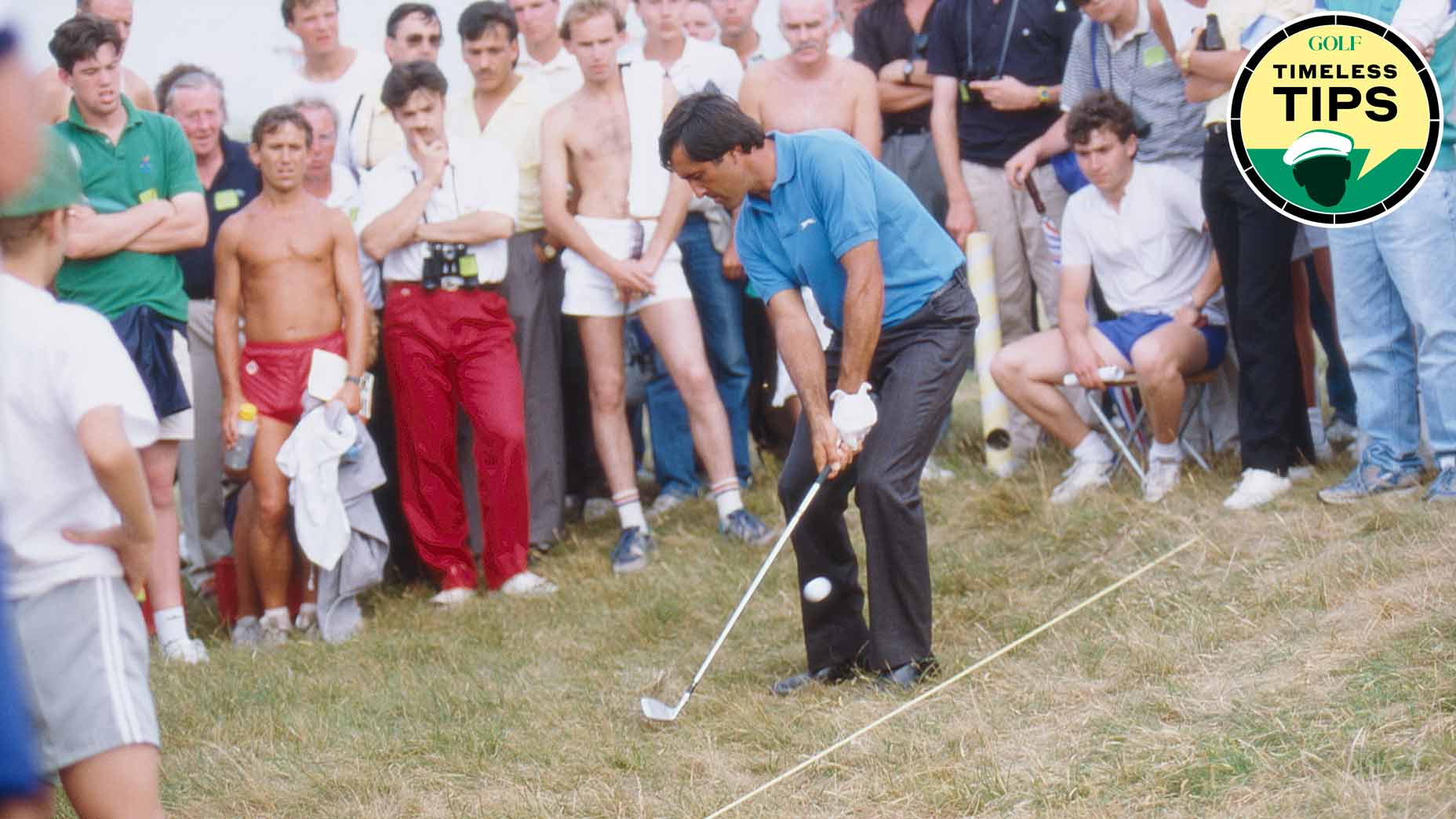Why your aim and alignment are poor (and how you can fix them!)
- Share on Facebook
- Share on Twitter
- Share by Email
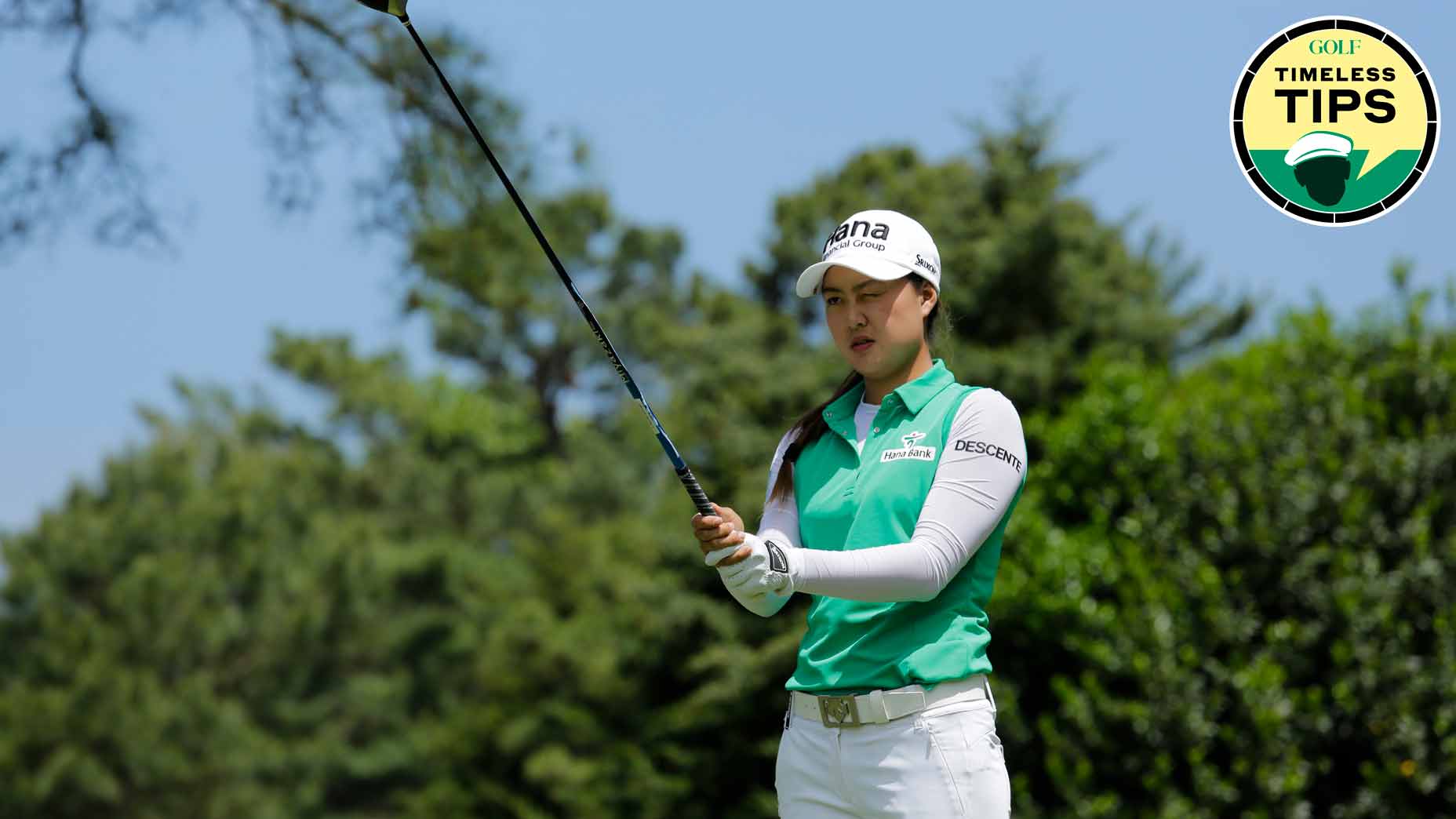
If you want any sort of consistency, you need to be able to aim properly.
Getty Images
Golf instruction is ever-evolving, but the best advice stands the test of time. In GOLF.com’s new series, Timeless Tips, we’re highlighting some of the greatest advice teachers and players have dispensed in the pages of GOLF Magazine. Today, we revisit a piece from our September 2001 issue regarding why golfers struggle with their aim — and how they can fix it. For unlimited access to the full GOLF Magazine digital archive, join InsideGOLF today; you’ll enjoy $140 of value for only $39.99/year.
Fundamentals might not be “sexy,” but they sure are important. Without a firm grasp of the basics, you have no chance of consistency. In fact, it can be argued that there is nothing more important to the golf swing than solid fundamentals.
One of those fundamentals comes in the form of aim. It might seem silly that something so rudimentary deserves so much attention, but it’s true. Having you aim and alignment dialed in is absolutely crucial for great golf.
Below, we’ve highlighted an article by Rick Martino from the September 2001 issue of GOLF Magazine. In it, the former GOLF Top 100 Teacher breaks down why amateurs struggle with their aim — and gives tips for how to fix the problem.
Why your aim stinks
If golf were just about hitting the ball a long way, John Daly would be the world’s best player instead of Tiger Woods, whose combination of distance and direction is unmatched. Remember, Tiger didn’t start dominating until he could hit the ball where he wanted to nearly every time. Even he can’t make birdies consistently from the rough.
Regardless of how far you hit it, you’ll score lower by hitting more fairways and greens. On average, you lose one stroke every time your ball is off the fairway. Even with good swings, aim and alignment mistakes create off-target shots.
At the PGA Learning Center in Port St. Lucie, Florida, we conducted an aim and alignment study, measuring players from Tour pros to 40 handicappers on the range and on the course from four distances — 70, 130 and 190 yards, and with driver. There were three significant findings:
10 ways to aim perfectly when you playBy: Kellie Stenzel, Top 100 Teacher
—Tour pros and low handicappers were more accurate and consistent than higher handicappers. Clubface aim and shoulder alignment mistakes for high handicappers (over 23) were double that of the pros.
—As target distance increased, alignment mistakes increased dramatically for all players. The off-target distance almost doubled from 70 to 190 yards.
—All players aimed better on the range than on the course. The average clubface error increased from 3.75 yards on the range to 4.35 yards on the course.
These numbers prove that most players have trouble aiming, and that better aim and alignment corresponds with lower scores. All golfers, including pros, can improve their aim.
Why is aiming so hard? You literally don’t know where you stand because you stand beside the ball, not directly behind it. You can’t change this, but you can improve by aiming with your shot shape in mind, squaring the clubface at address, aligning your body correctly and using a pre-shot routine.
Good aim and alignment result in better shots — all without making a swing change. Consider how well you would play if you could hit a second ball after every bad shot: The mulligan is usually better than the first, yet the swing doesn’t change from one shot to the next. Instead, you adjust your alignment so it matches your swing. So you can change your swing, or you can allow your aim and alignment to compliment your swing. The latter is easier. Here’s how to do it.
Aim: Change your focus
The target — the flag, usually — is such an obvious aiming point that it’s where your attention naturally goes. But keep in mind that the target is where you want your shot to end up. Unless you hit the ball dead straight, you don’t want to aim there. Instead, aim for where you want the ball to start.
Identify you ball-flight pattern for the shot you’re playing, whether it’s left-to -right or right-to-left. Allow for the curvature with your aim. Lining up to a starting point rather than the flagstick will improve your likelihood of finishing close to the hole.
All of our market picks are independently selected and curated by the editorial team. If you buy a linked product, GOLF.COM may earn a fee. Pricing may vary.

Tour Aim With 3 Alignment Sticks
$89.99
View Product
Clubface: Factor in the tilt
Now that you’ve identified the starting line, you must square your clubface 90 degrees to this line. Even a small change in clubface alignment will affect the direction of the shot.
Here’s how to nail your aim and alignment before every shotBy: Tina Tombs, Top 100 Teacher
Because the right hand (for right-handers) is lower on the club than the left hand, the right shoulder is lower than the left at address. Yet most golfers grip the club — and check clubface alignment— while standing straight up and down, with the shoulders level. It may look fine — a perfectly vertical face which indicates it is square — but it doesn’t stay that way, because the ensuing tilt alters the clubface’s position; it is no longer square at address.
It makes more sense to check the clubface while assuming the tilt you will have at address. This exercise will help you square the face consistently.
Alignment: It’s in the shoulders
The most common method of checking body alignment is placing clubs on the ground. But that only tells you what your feet are doing, not necessarily the parts of the body actually swinging the club: the arms and hands. And since they are connected to the shoulders, the shoulders — not the feet — must be lined up square (parallel) to the starting line.
Here’s a good self-check: from address — without moving your shoulders — pick up the club and hold it from both ends, with your arms hanging straight down. The club will mirror your shoulder alignment, which should be parallel to the starting line.
Routine: Set up for accuracy
On the course and on the range, a consistent pre-shot routine should incorporate all the elements of aim and alignment discussed above, allowing you to set up properly for every shot.
Here is a suggested routine using the techniques and strategies in this article:
—Pick your starting line from behind the ball.
—Set the club’s leading edge at 90 degrees to the starting line, factoring in the tilt of your upper body at address.
—Line up the shoulders parallel to the starting line as you take your stance.
—Look down the starting line to confirm your aim and alignment.
—Look back at the ball, then swing.
Alignment strategies
Use a friend
Because you’re standing to the side of the starting line, it’s hard to tell whether you are aligned correctly. There is no substitute for another pair of eyes; even Tour professionals rely on caddies or teachers to check their aim and alignment. Find someone you trust for accurate feedback.
Try these 3 alignment and aim techniques for better ball strikingBy: Zephyr Melton
Line up the logo
Many Tour pros use the ball’s logo to aim on the greens — and perhaps you do, too. Why not use the same technique on the tee, where you also have control over the placement of jf the ball? Line up the logo so it points down the starting line, then aim the clubface and align the body using this reference. It is a great aid; use it whenever you can.
Choose an intermediate target
You can use the ball’s logo off the tee, but not from the fairway. You need a different alignment aid, and there is none better than an intermediate target — a divot, a tuft of grass, or a discoloration along the starting line. As our testing showed, it is much easier to line up an object a few feet away than one 130 yards away.
Look down the starting line
It is surprising how many people set up without looking at where they want the ball to go. They look mostly at the bal l— probably trying to come up with a swing thought to compensate for their poor aim. Looking down the starting line—for four or five seconds at least — will allow you to make adjustments with your body to ensure proper aim and alignment. When you finally look back at the ball, you can concentrate on making a better swing, one that you don’t have to manipulate to make up for poor alignment.
Latest In Instruction

Zephyr Melton
Golf.com Editor
Zephyr Melton is an assistant editor for GOLF.com where he spends his days blogging, producing and editing. Prior to joining the team at GOLF, he attended the University of Texas followed by stops with the Texas Golf Association, Team USA, the Green Bay Packers and the PGA Tour. He assists on all things instruction and covers amateur and women’s golf. He can be reached at zephyr_melton@golf.com.

